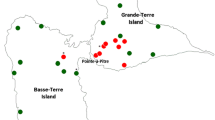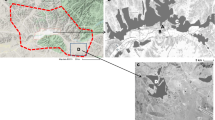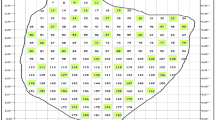Abstract
Objectives: Air pollution has been linked to respiratory outcomes but controversy persists about its long-term effects. We used a novel technique to estimate the outdoor concentrations of sulphur dioxide (SO2) at small-area level to study the long-term effects on respiratory symptoms and disease in children. Methods: As part of the international SAVIAH study, parents of 8,013 children aged 7–10 studied in Prague (Czech Republic) and Poznan (Poland) completed a questionnaire covering respiratory health, demographic and socio-economic factors and health behaviours (response rate 91%). This report is based on 6,959 children with complete data. Outdoor SO2 was measured by passive samplers at 80 sites in Poznan and 50 sites in Prague during 2-week campaigns. Concentrations of SO2 at each point (location) in the study areas were estimated from these data by modelling in a geographical information system. The mean of the estimated SO2 concentrations at children's homes and schools was used as an indicator of exposure to outdoor SO2. Results: The prevalence of respiratory outcomes was similar in both cities. In the pooled data, 12% of children had experienced wheezing/whistling in the past 12 months; 28% had a lifetime prevalence of wheezing/whistling; 14% had a dry cough at night; and 3% had had asthma diagnosed by a doctor. The estimated mean exposure to outdoor SO2 was 80 (range 44–140) µg/m3 in Poznan and 84 (66–97) µg/m3 in Prague. After socio-economic characteristics and other covariates were controlled for, SO2 was associated with wheezing/whistling in the past 12 months (adjusted OR per 50 µg/m3 1.32, 95% CI 1.10–1.57), lifetime prevalence of wheezing/whistling (OR 1.13, 95% CI 0.99–1.30), and lifetime prevalence of asthma diagnosed by a doctor (OR 1.39, 95% CI 1.01–1.92). The association with dry cough at night did not reach statistical significance. Conclusions: In these two Central European cities with relatively high levels of air pollution, small-area based indicators of long-term outdoor winter concentrations of SO2 were associated with wheezing / whistling and with asthma diagnosed by a doctor.
Similar content being viewed by others

Author information
Authors and Affiliations
Corresponding author
Additional information
Electronic Publication
Rights and permissions
About this article
Cite this article
Pikhart, H., Bobak, M., Gorynski, P. et al. Outdoor sulphur dioxide and respiratory symptoms in Czech and Polish school children: a small-area study (SAVIAH). IAOEH 74, 574–578 (2001). https://doi.org/10.1007/s004200100266
Received:
Accepted:
Published:
Issue Date:
DOI: https://doi.org/10.1007/s004200100266



